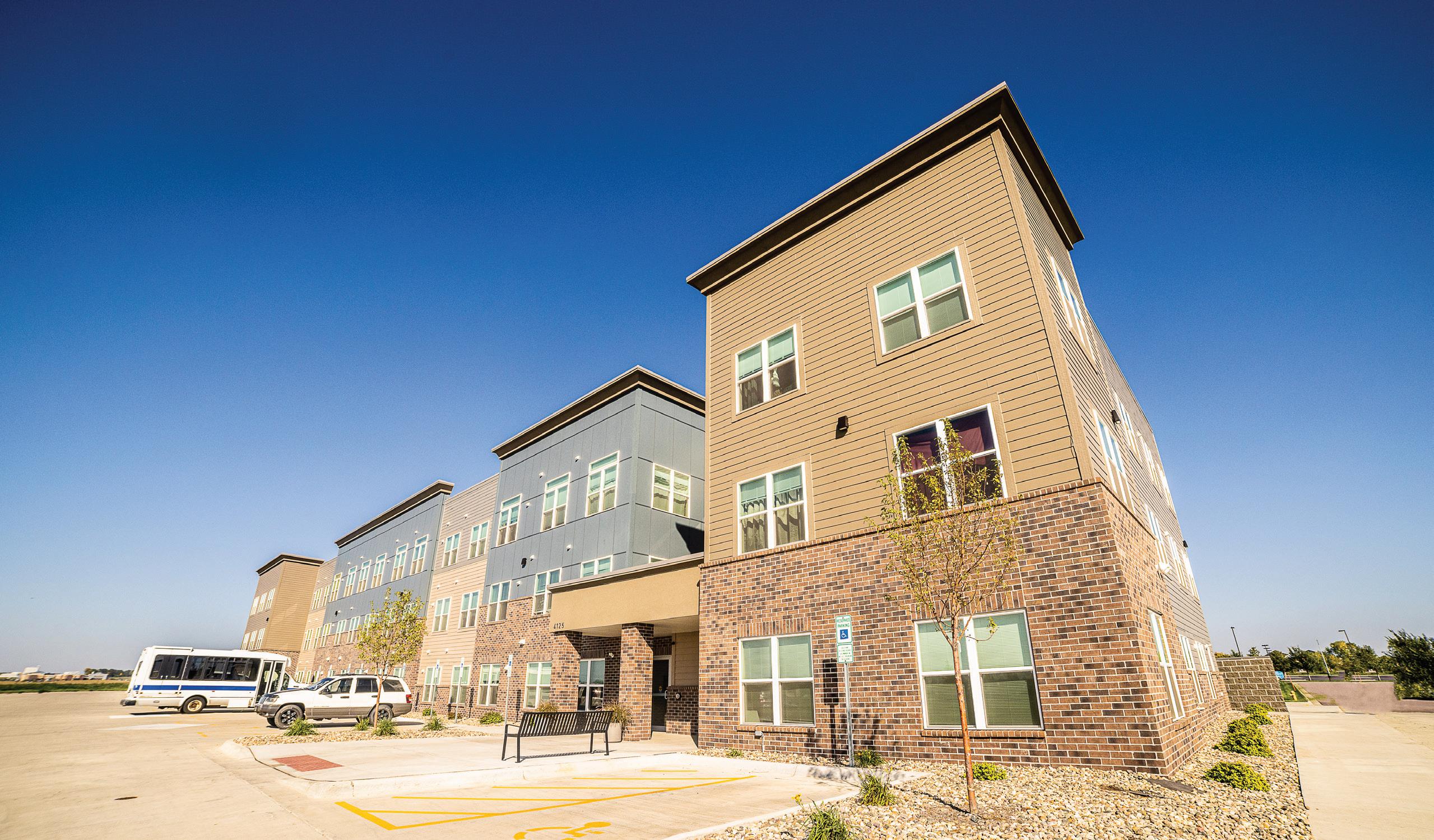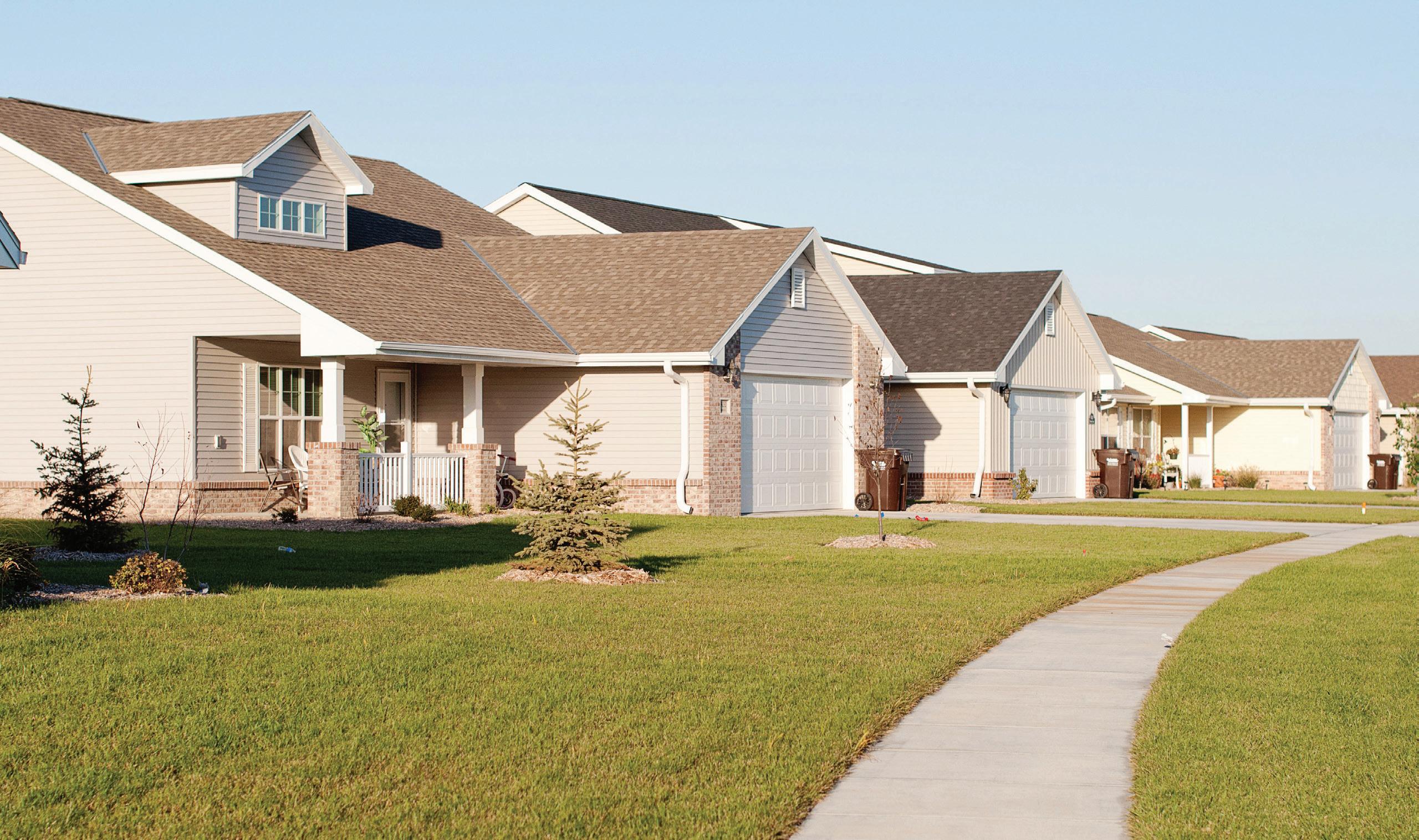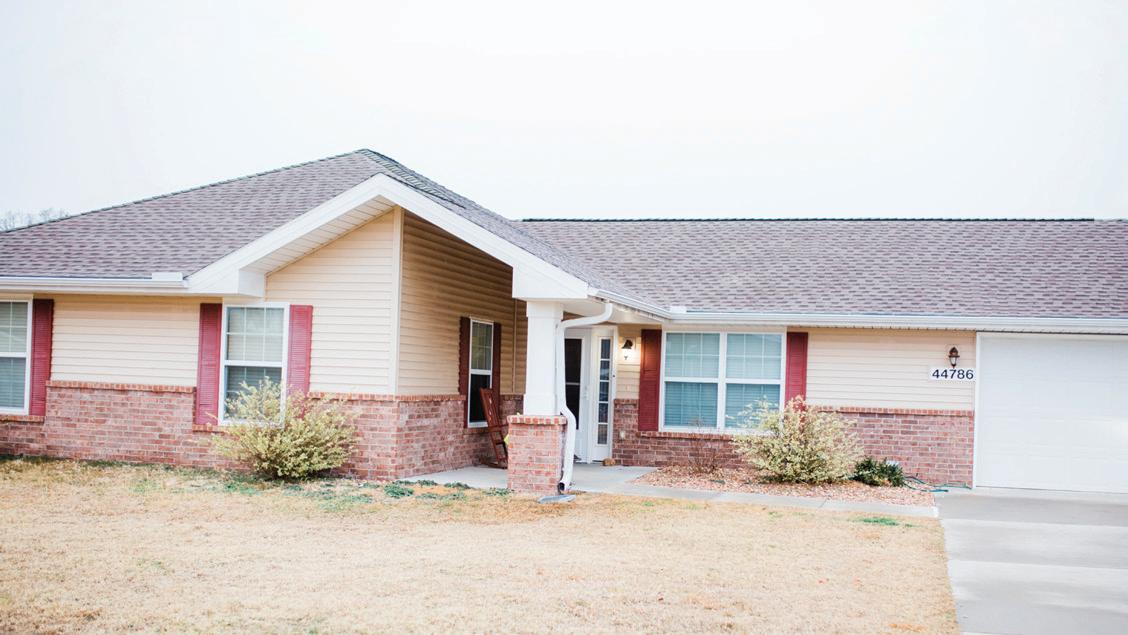A Guide to LIHTC
CONTENTS
Low Income Housing Tax Credits
The history of the tax credit and how the process works.
Proven Track Record
A look at the success of LIHTCs.
The Need for Affordable Housing
Read about the growing need for affordable housing in our communities.

More than Housing
The LIHTC program and its effects on the economy.
Supporting the Credit
Ways that you can help support and preserve the LIHTC program.
Low Income Housing Tax Credits
A Brief History
Over 35 years ago, Congress passed (and the President signed) the Tax Reform Act of 1986. Among many other things, the Act created the Low Income Housing Tax Credit (Housing Credit) program, whose purpose was to spur private investment in affordable housing throughout the country. This program is one of the most successful affordable housing initiatives ever launched by the federal government and to date is the longest tenured federal housing program. The Housing Credit (also referred to as “Section 42” – its IRS code section) provides a dollar-fordollar credit against a taxpayer’s federal income tax liability. It stimulates the bulk of all affordable rental housing developed in the U.S. today. The program is a highly effective public-private partnership that harnesses the discipline of the marketplace to efficiently build safe, decent and affordable housing.

Housing Credits are very attractive to banks, insurance companies and corporations with taxable income. As stated, the credits provide a dollar-for-dollar reduction in federal income tax liability, providing an efficient and socially responsible means for taxpayers to reduce their effective tax rate. And for financial institutions, investment in Housing Credits can be an effective way to satisfy Community Reinvestment Act requirements.
Over the past few decades, the Housing Credit has become an extremely important tool for developing affordable housing. The program has helped finance more than 3.6 million quality, affordable housing units, leveraging almost $100 billion in private capital, providing homes for millions of low-income families, seniors, veterans, Native Americans, farm workers and people with disabilities.
So How Does It Work?
Each State receives a fixed amount of Housing Credits from the U.S. Treasury Department
based on its population. For 2023, the Housing Credit amount is equal to a State’s population multiplied by $2.75 (with each State receiving a minimum of $3,185,000 in credits). In addition, properties financed in substantial part with the proceeds of taxexempt bonds are eligible for Housing Credits, the amount of which is not subject to the above formula.
Each State has a Housing Finance Agency (HFA) that administers the Housing Credit program. Credits are generally awarded to affordable housing developers by the HFAs on a competitive basis through an application and allocation process. The HFAs are permitted to identify and prioritize their State’s unique housing needs and goals and have wide discretion in determining which developers receive Housing Credit awards (these priorities and goals are embodied in a “Qualified Allocation Plan” or “QAP”). Once a QAP is issued, developers apply to the HFAs for credits. HFAs review and score the applications and award Housing Credits to those developments that best meet the needs of the particular State. It’s a great example of local control over a national resource.
The amount of the Housing Credit available to a property is based on a variety of factors, including (i) actual cost of construction, (ii) number of units in a development that will be rented to lowincome tenants, and (iii) the amount of credits necessary to make the property financially feasible. HFAs conduct a rigorous review of each application to ensure that developments only receive
“...one of the most successful affordable housing
Above: President Reagan signing the Tax Reform Bill in October of 1986 during a ceremony at the White House.
enough Housing Credits to make them both financially feasible and affordable. In addition to any prerequisites set forth in a QAP, a property must also satisfy one of the following federal income test requirements:
• At least 20% of the development’s units are occupied by individuals whose income is 50% or less of the area median income adjusted for family size (AMI).
• At least 40% of the development’s units are occupied by individuals whose income is 60% or less of AMI.
• At least 40% of the development’s units are occupied by individuals with income averaging no more than 60% of AMI, and no units are occupied by individuals with income greater than 80% of AMI.
And satisfy the following rent test requirements: A unit is “rent restricted” if the rent charged to the tenant is not more the 30% of the income limit applicable to the unit (generally the 60% AMI or 50% AMI limit referenced above).
Section 42 also requires that Housing Credit properties remain income-restricted and rent-restricted for an initial 15-year “Compliance Period” plus a subsequent 15year “extended use” period. HFAs may impose lengthier affordability periods if they desire.
While the HFAs are busy reviewing applications and awarding Housing Credits, Midwest Housing Equity Group (MHEG) creates and capitalizes investment funds (“Investment Funds”) comprised of institutional investors. When developers receive credit awards, the Investment Fund will partner with them to provide equity capital to their properties. In exchange for the equity investment, the Investment Fund (and ultimately the investors) receives the Housing Credits awarded to the underlying property (the credits flow for a period ten years). Investors thus earn a market rate of return on their investment. And, as a result of receiving the equity investment to pay for construction costs, properties need less debt, thereby allowing property owners to charge lower rents while still developing a financially viable property.
initiatives ever launched by the federal government.”
Midwest Housing Equity Group Fund sponsor Investment Fund (Limited Partnership) - Owned 99.99% by the Fund Investors - Owned .01% by MHEG Housing Finance Agency Awards housing credits Fund Investors Banks, insurance companies, corporations Property - Owned 100% by the Operating Partnership LP/LLC
Developer General Partner Operating Partnership - Owned 99.99% by the Investment Fund - Owned .01% by the Developer/General Partner
FUND STRUCTURE
Proven Track Record
The Housing Credit is “widely regarded as the most successful housing production and preservation program in the nation’s history,” according to a 2010 report issued by Harvard’s Joint Center for Housing Studies. A study of the program recently issued by the accounting firm CohnReznick reports the annualized foreclosure rate for Housing Credits properties is only 0.57%, far below the rate for the overall multifamily rental housing asset class. That success is the result of numerous aspects of the Housing Credit program:
• Housing Credits are awarded only to those developments that best meet the housing needs of the State. Only the strongest applications receive credits. This competitive process encourages developers to design financially viable properties that offer a safe, decent and affordable place to live combined with practical amenities such as computer labs and free credit counseling classes.
• Housing Credits are subject to recapture for 15 years. Recapture is most frequently triggered by foreclosure or the failure to maintain the rent-restrictions and income-restrictions applicable to the units. MHEG and the Investment Funds obviously want to avoid any recapture of the Housing Credits. Each Housing Credit property is carefully monitored by MHEG to ensure it complies with the affordability restrictions. Each property is also backstopped by property-level and Fund-level reserves, providing a strong safety net in the event of unforeseen market changes. MHEG has had zero foreclosures and zero loss of credits.
• This public-private partnership structure, and the corresponding involvement of investors and MHEG, results in the imposition of private-sector discipline that is absent from many other federal housing production programs.
The Housing Credit is an incredibly valuable tool. It creates safe, decent and affordable homes. The properties it finances revitalize the neighborhoods in which they are located. It creates jobs and opportunities for our state and local communities. And it’s all privately built, operated and managed.
 Greystone Homes in Des Moines, Iowa offers 26 single family rental homes for the Sherman Hills/Drake neighborhood.
Greystone Homes in Des Moines, Iowa offers 26 single family rental homes for the Sherman Hills/Drake neighborhood.
NET INVESTMENT IN LIHTC
“The housing tax credit program has proved to be the most efficient capital subsidy for creating affordable housing at scale,” noted CohnReznick in their most recent periodic affordable housing study. They estimate that approximately $18.4 billion of capital was raised in 2020 for housing credit investments. In most recent years, 70 percent of all housing credit investments were acquired through syndication. Between 2000 and 2020, approximately 55% of fund equity was executed through multi-investor fund offerings.
MHEG began syndicating in 1993 with the release of our first fund, NAHF 1993, L.P., a $4.75 million fund with a total of eight investors.
Since then MHEG has released 65 funds raising over $3 billion in equity capital through the investment of almost 150 banks, insurance companies and corporations.

MHEG Cumulative Equity Capital Raised to Date
$500M $1.0B $1.5B $2.0B $2.5B $3.0B 2018 - 2022 2013 - 2017 2008 - 2012 2003 - 2007 1998 - 2002 1993 - 1997
Technology Heights II Apartments
39 rental
for families
Sioux Falls, South Dakota.
Source: “Affordability Housing CRedit Study,” CohnReznick (November 2021)
provides
units
in
The Need for Affordable Housing
According to “The State of the Nation’s Housing 2021” by Harvard’s Joint Center for Housing Studies, the pandemic and accompanying financial hardships have left millions of households in distress. Over 46 percent of all renters in the U.S. pay more than 30 percent of their income on housing, and over 24 percent of all renters are severely rent burdened, meaning they pay over 50 percent of their income in rent.1
As the need for affordable housing grows, the supply continues to shrink. According to the National Low Income Housing Coalition, the U.S. has a shortage of 7 million affordable rental homes for extremely low income renters; “only 36 affordable and available rental homes exist for every 100 extremely low-income renter households.”2 The affordable housing supply cannot meet the demand of low-income renters in every U.S. state. Nearly all Housing Credit properties are fully occupied, many with lengthy waiting lists.3
In addition, there is a significant need for workforce housing in many communities - housing necessary for businesses to grow. According to the Center for Housing Policy, many employers report that a lack of affordable housing makes it more difficult to recruit and retain employees. In addition to workforce housing, our aging population is causing the demand for independent senior housing to increase sharply.
Continued production of affordable housing via the Housing Credit program is instrumental to addressing these issues. Stable, affordable housing is necessary for basic well-being. The pandemic has highlighted how vital affordable, quality housing is to health and well-being.1
OUT OF REACH
• In most areas of the U.S., a family of four with a poverty-level household income can afford a monthly rent of no more than $694, assuming the household can spend as much as 30% of its income on housing.2
• The average monthly fair market rents for a one-bedroom or twobedroom rental home are $1,105 and $1,342, respectively.2
• More than 40% of wage earners cannot afford a modest onebedroom rental home at the fair market rent working one full-time job. Nearly 60% of wage earners cannot afford a modest twobedroom rental home working one full-time job.2
1 “The State of the Nation’s Housing 2021,” Joint Center for Housing Studies of Harvard University
2 “Out of Reach 2022: The High Cost of Housing,” National Low Income Housing Coalition
3 “Affordability Housing CRedit Study,” CohnReznick (November 2021)

Over 24 percent of all renters are paying over 50 percent of their income in rent.
More than Housing
Creating Jobs
The Housing Credit does more than provide affordable housing, it also generates millions of jobs for Americans and helps stimulate the economy. During the construction process, the program creates jobs for architects, carpenters, electricians, plumbers and roofers to name a few. Once the property is completed, it requires property managers, leasing agents, maintenance workers and other service providers to operate the property. In addition, the new residents help support local businesses and jobs by spending their income.
According to the National Association of Home Builders, the Housing Credit program generates approximately $2.8 billion in federal, state and local taxes, creates approximately 95,000 new full-time jobs and adds $7.1 billion in income to the economy each year.
They estimate on average that building a 100-unit property provides the following in one year:
• $12.4 million in local income for state residents
• $3.3 million in taxes and other revenue for state and local governments
• 170 local jobs for residents of the state
They also estimate on average the recurring impacts of that a 100-unit property provides annually:
• $2.9 million in local income for state residents
• $842,000 in taxes and other revenue for state and local governments
• 49 local jobs for residents of the state
Source: “The Economic Impact of Home Building in a Typical State” National Association of Home Builders (April 2015)
Types of jobs created during and after the construction of a 100-unit multifamily Housing Credit property.
20% 40% 60% 80% 100% Jobs Created Directly and Indirectly by New Construction Jobs Supported by Spending Locally Earned Wages Jobs Supported by Households Occupying New Homes Construction Wholesale & Retail Trade Business & Professional Services Restaurants & Bars Health, Education & Social Services Local Government Other
Source: “The Local Economic Impact of Typical Housing Tax Credit Developments” National Association of Home Builders (2010)
Left: Reese Estates provides 15 single family rental homes for the community of Waverly, Nebraska.
Changing Lives
Meet Victoria
She’s a proud single mom of three kids. She works hard during the day at an auto body shop. In the evenings, she enjoys watching her kids play outside with all the children in the neighborhood. She lives for routine and her children. She loves her new home and is excited to be decorating. She has plans to go back to college to become a counselor.
A year ago, Victoria was in a much different place. She was in an unhealthy relationship and knew she needed to leave. Unsure of what the future would bring, and scared to be on her own, she finally made the decision. When she and the kids left, they left everything - their home, their school, their belongings. Victoria and the kids moved in with her mom temporarily while she searched for housing.
On a whim, Victoria stopped by South Rock Creek Estates not realizing it was an affordable housing development. The property manager explained the program and went through all the forms needed for her to apply. After learning about the affordable rents and viewing the community, she knew she needed to get in there. “It’s not what you think it’s going to be, when you hear lowincome,” explained Victoria. “I didn’t think they would be as nice as they are.” A few weeks later she was moving in.
Since moving into the home, Victoria says things have been moving forward. It’s been a fresh start for the family, Victoria loves the neighborhood, the schools, she feels safe and everyone is happier. “It’s a foundation, and if your foundation is solid then anything can happen.”
South Rock Creek Estates was made possible for Victoria and other families through the use of the Housing Credit program.


More Americans than ever need affordable housing.
1 in 6 renters in the U.S. are behind in their rent.1
Over 10 million low-income households spend more than 50% of their monthly income on rent, cutting into other essential expenses like childcare, medicine and groceries.2
Every 1 in 7 Americans is severely housing cost burdened.2
Low-income households are especially hit hard by lack of affordable housing. For every 100 extremely lowincome households, there are only 37 affordable homes available.3
© Midwest Housing Equity Group l Published Jan. 2023
“It may not be a lot to other people, but to people who have been through the things I have, it’s major. This is a really good program, it really is, it can really help people change their lives.”
~ Victoria



 Greystone Homes in Des Moines, Iowa offers 26 single family rental homes for the Sherman Hills/Drake neighborhood.
Greystone Homes in Des Moines, Iowa offers 26 single family rental homes for the Sherman Hills/Drake neighborhood.




